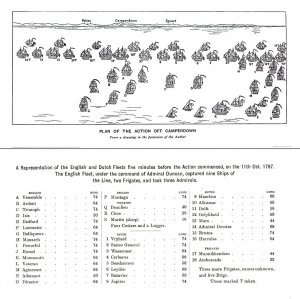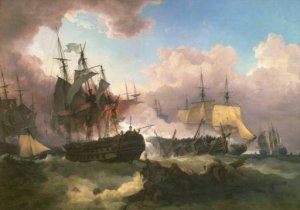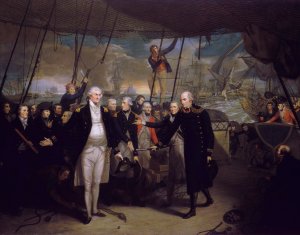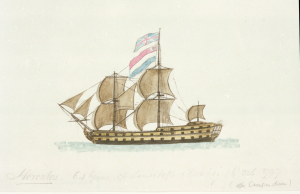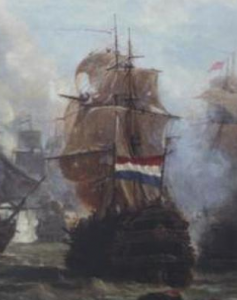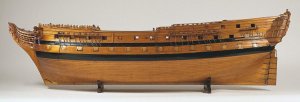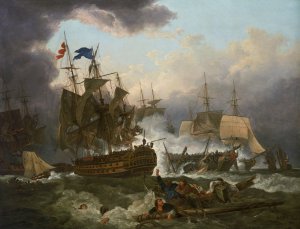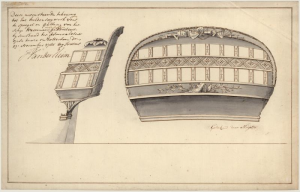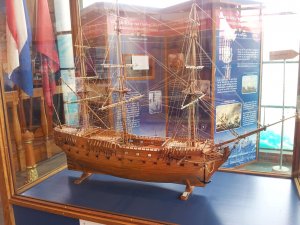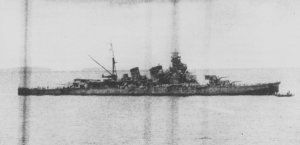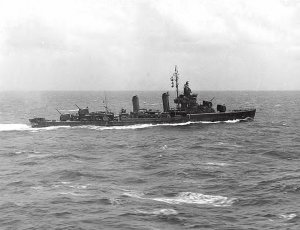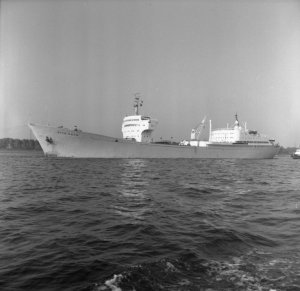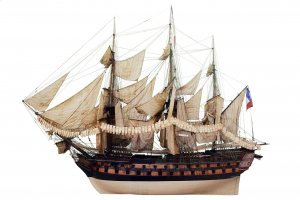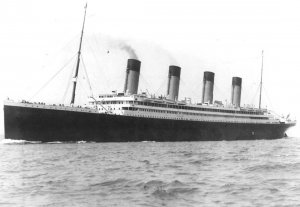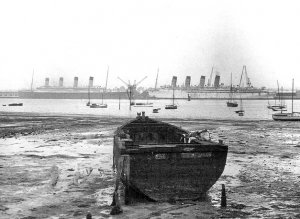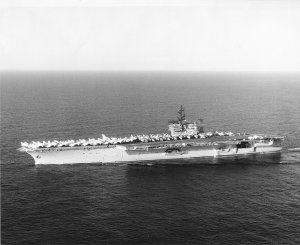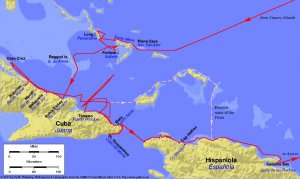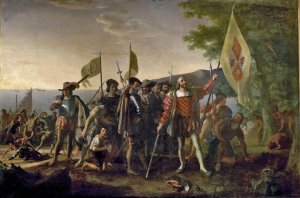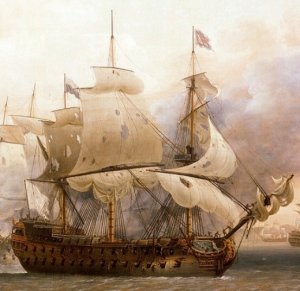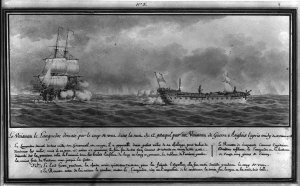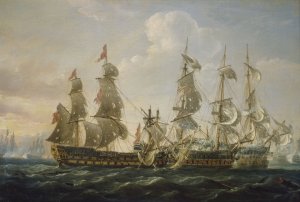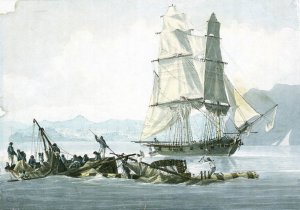Today in Naval History - Naval / Maritime Events in History
10 October 1845 – In Annapolis, Maryland, the Naval School (later renamed the United States Naval Academy) opens with 50 midshipman students and seven professors.
The United States Naval Academy (also known as USNA, Annapolis, or simply Navy) is a four-year coeducational federal service academy adjacent to Annapolis, Maryland. Established on 10 October 1845, under Secretary of the Navy George Bancroft, it is the second oldest of the United States' five service academies, and educates officers for commissioning primarily into the United States Navy and United States Marine Corps. The 338-acre (137 ha) campus is located on the former grounds of Fort Severn at the confluence of the Severn River and Chesapeake Bay in Anne Arundel County, 33 miles (53 km) east of Washington, D.C. and 26 miles (42 km) southeast of Baltimore. The entire campus (known to insiders as "the Yard") is a National Historic Landmark and home to many historic sites, buildings, and monuments. It replaced Philadelphia Naval Asylum, in Philadelphia, that served as the first United States Naval Academy from 1838 to 1845 when the Naval Academy formed in Annapolis.
Candidates for admission generally must both apply directly to the academy and receive a nomination, usually from a Member of Congress. Students are officers-in-training and are referred to as midshipmen. Tuition for midshipmen is fully funded by the Navy in exchange for an active duty service obligation upon graduation. Approximately 1,200 "plebes" (an abbreviation of the Ancient Roman word plebeian) enter the Academy each summer for the rigorous Plebe Summer. About 1,000 midshipmen graduate. Graduates are usually commissioned as ensigns in the Navy or second lieutenants in the Marine Corps, but a small number can also be cross-commissioned as officers in other U.S. services, and the services of allied nations. The United States Naval Academy has some of the highest paid graduates in the country according to starting salary.[5] The academic program grants a bachelor of science degree with a curriculum that grades midshipmen's performance upon a broad academic program, military leadership performance, and mandatory participation in competitive athletics. Midshipmen are required to adhere to the academy's Honor Concept.
History

U.S. Naval Academy in 1853

Stereoscopic views of midshipman quarters and mess hall c. 1905
The history of the Academy can be divided into four eras:
1) use of original Fort Severn 1845-1861,
2) "Porter's Academy" 1865-1903,
3) "Flagg Academy" 1903-1941,
4) modern era 1941-present.
Identity
The academy's Latin motto is Ex Scientia Tridens, which means "Through Knowledge, Sea Power." It appears on a design devised by the lawyer, writer, editor, encyclopedist and naval academy graduate (1867), Park Benjamin, Jr.It was adopted by the Navy Department in 1898 due to the efforts of another graduate (also 1867) and collaborator, Jacob W. Miller. Benjamin states:
Early years
The institution was founded as the Naval School on 10 October 1845 by Secretary of the Navy George Bancroft. The campus was established at Annapolis on the grounds of the former U.S. Army post Fort Severn. The school opened with 50 midshipman students and seven professors. The decision to establish an academy on land may have been in part a result of the Somers Affair, an alleged mutiny involving the Secretary of War's son that resulted in his execution at sea. Commodore Matthew Perry had a considerable interest in naval education, supporting an apprentice system to train new seamen, and helped establish the curriculum for the United States Naval Academy. He was also a vocal proponent of modernization of the navy.
Originally a course of study for five years was prescribed. Only the first and last were spent at the school with the other three being passed at sea. The present name was adopted when the school was reorganized in 1850 and placed under the supervision of the chief of the Bureau of Ordnance and Hydrography. Under the immediate charge of the superintendent, the course of study was extended to seven years with the first two and the last two to be spent at the school and the intervening three years at sea. The four years of study were made consecutive in 1851 and practice cruises were substituted for the three consecutive years at sea. The first class of naval academy students graduated on 10 June 1854. They were considered as passed midshipmen until 1912, when graduates were first sworn in as officers.
In 1860, the Tripoli Monument was moved to the academy grounds. Later that year in August, the model of the USS Somers experiment was resurrected when the USS Constitution, then 60 years old, was recommissioned as a school ship for the fourth-class midshipmen after a conversion and refitting begun in 1857. She was anchored at the yard, and the plebes lived on board the ship to immediately introduce them to shipboard life and experiences.
The American Civil War
The Civil War was disruptive to the Naval Academy. Southern sympathy ran high in Maryland. Although riots broke out, Maryland did not declare secession. The United States government planned to move the school, when the sudden outbreak of hostilities forced a quick departure. Almost immediately the three upper classes were detached and ordered to sea, and the remaining elements of the academy were transported to Fort Adams in Newport, Rhode Island by the USS Constitution in April 1861, where the academy was set up in temporary facilities and opened in May. The Annapolis campus, meanwhile, was turned into a United States Army Hospital.
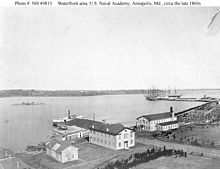
US Naval Academy waterfront in the late 1860s with the barrack/school ships USS Constitution and Santeetied up in the back ground. Other ships not identified.
The United States Navy was stressed by the situation as 24% of its officers resigned and joined the Confederate States Navy, including 95 graduates and 59 midshipmen, as well as many key leaders involved with the founding and establishment of USNA. The first superintendent, Admiral Franklin Buchanan, joined the Confederate States Navy as its first and primary admiral. Captain Sidney Smith Lee, the second commandant of midshipmen, and older brother of Robert E. Lee, left Federal service in 1861 for the Confederate States Navy. Lieutenant William Harwar Parker, CSN, class of 1848, and instructor at USNA, joined the Virginia State Navy, and then went on to become the superintendent of the Confederate States Naval Academy. Lieutenant Charles "Savez" Read may have been "anchor man" (graduated last) in the class of 1860, but his later service to the Confederate States Navy included defending New Orleans, service on CSS Arkansas and CSS Florida, and command of a series of captured Union ships that culminated in seizing the US Revenue Cutter Caleb Cushing in Portland, Maine. Lieutenant James Iredell Waddell, CSN, a former instructor at the US Naval Academy, commanded the CSS Shenandoah. The first superintendent of the United States Naval Observatory, advocate of the creation of the United States Naval Academy, after whom Maury Hall is named, similarly served in the Confederate States Navy.
The midshipmen and faculty returned to Annapolis in the summer of 1865, just after the war ended.
https://en.wikipedia.org/wiki/United_States_Naval_Academy
10 October 1845 – In Annapolis, Maryland, the Naval School (later renamed the United States Naval Academy) opens with 50 midshipman students and seven professors.
The United States Naval Academy (also known as USNA, Annapolis, or simply Navy) is a four-year coeducational federal service academy adjacent to Annapolis, Maryland. Established on 10 October 1845, under Secretary of the Navy George Bancroft, it is the second oldest of the United States' five service academies, and educates officers for commissioning primarily into the United States Navy and United States Marine Corps. The 338-acre (137 ha) campus is located on the former grounds of Fort Severn at the confluence of the Severn River and Chesapeake Bay in Anne Arundel County, 33 miles (53 km) east of Washington, D.C. and 26 miles (42 km) southeast of Baltimore. The entire campus (known to insiders as "the Yard") is a National Historic Landmark and home to many historic sites, buildings, and monuments. It replaced Philadelphia Naval Asylum, in Philadelphia, that served as the first United States Naval Academy from 1838 to 1845 when the Naval Academy formed in Annapolis.
Candidates for admission generally must both apply directly to the academy and receive a nomination, usually from a Member of Congress. Students are officers-in-training and are referred to as midshipmen. Tuition for midshipmen is fully funded by the Navy in exchange for an active duty service obligation upon graduation. Approximately 1,200 "plebes" (an abbreviation of the Ancient Roman word plebeian) enter the Academy each summer for the rigorous Plebe Summer. About 1,000 midshipmen graduate. Graduates are usually commissioned as ensigns in the Navy or second lieutenants in the Marine Corps, but a small number can also be cross-commissioned as officers in other U.S. services, and the services of allied nations. The United States Naval Academy has some of the highest paid graduates in the country according to starting salary.[5] The academic program grants a bachelor of science degree with a curriculum that grades midshipmen's performance upon a broad academic program, military leadership performance, and mandatory participation in competitive athletics. Midshipmen are required to adhere to the academy's Honor Concept.
History

U.S. Naval Academy in 1853

Stereoscopic views of midshipman quarters and mess hall c. 1905
The history of the Academy can be divided into four eras:
1) use of original Fort Severn 1845-1861,
2) "Porter's Academy" 1865-1903,
3) "Flagg Academy" 1903-1941,
4) modern era 1941-present.
Identity
The academy's Latin motto is Ex Scientia Tridens, which means "Through Knowledge, Sea Power." It appears on a design devised by the lawyer, writer, editor, encyclopedist and naval academy graduate (1867), Park Benjamin, Jr.It was adopted by the Navy Department in 1898 due to the efforts of another graduate (also 1867) and collaborator, Jacob W. Miller. Benjamin states:
The seal or coat-of-arms of the Naval Academy has for its crest a hand grasping a trident, below which is a shield bearing an ancient galley coming into action, bows on, and below that an open book, indicative of education, and finally bears the motto, 'Ex Scientia Tridens' (From knowledge, sea power).
The trident, emblem of the Roman god Neptune, represents seapower.Early years
The institution was founded as the Naval School on 10 October 1845 by Secretary of the Navy George Bancroft. The campus was established at Annapolis on the grounds of the former U.S. Army post Fort Severn. The school opened with 50 midshipman students and seven professors. The decision to establish an academy on land may have been in part a result of the Somers Affair, an alleged mutiny involving the Secretary of War's son that resulted in his execution at sea. Commodore Matthew Perry had a considerable interest in naval education, supporting an apprentice system to train new seamen, and helped establish the curriculum for the United States Naval Academy. He was also a vocal proponent of modernization of the navy.
Originally a course of study for five years was prescribed. Only the first and last were spent at the school with the other three being passed at sea. The present name was adopted when the school was reorganized in 1850 and placed under the supervision of the chief of the Bureau of Ordnance and Hydrography. Under the immediate charge of the superintendent, the course of study was extended to seven years with the first two and the last two to be spent at the school and the intervening three years at sea. The four years of study were made consecutive in 1851 and practice cruises were substituted for the three consecutive years at sea. The first class of naval academy students graduated on 10 June 1854. They were considered as passed midshipmen until 1912, when graduates were first sworn in as officers.
In 1860, the Tripoli Monument was moved to the academy grounds. Later that year in August, the model of the USS Somers experiment was resurrected when the USS Constitution, then 60 years old, was recommissioned as a school ship for the fourth-class midshipmen after a conversion and refitting begun in 1857. She was anchored at the yard, and the plebes lived on board the ship to immediately introduce them to shipboard life and experiences.
The American Civil War
The Civil War was disruptive to the Naval Academy. Southern sympathy ran high in Maryland. Although riots broke out, Maryland did not declare secession. The United States government planned to move the school, when the sudden outbreak of hostilities forced a quick departure. Almost immediately the three upper classes were detached and ordered to sea, and the remaining elements of the academy were transported to Fort Adams in Newport, Rhode Island by the USS Constitution in April 1861, where the academy was set up in temporary facilities and opened in May. The Annapolis campus, meanwhile, was turned into a United States Army Hospital.

US Naval Academy waterfront in the late 1860s with the barrack/school ships USS Constitution and Santeetied up in the back ground. Other ships not identified.
The United States Navy was stressed by the situation as 24% of its officers resigned and joined the Confederate States Navy, including 95 graduates and 59 midshipmen, as well as many key leaders involved with the founding and establishment of USNA. The first superintendent, Admiral Franklin Buchanan, joined the Confederate States Navy as its first and primary admiral. Captain Sidney Smith Lee, the second commandant of midshipmen, and older brother of Robert E. Lee, left Federal service in 1861 for the Confederate States Navy. Lieutenant William Harwar Parker, CSN, class of 1848, and instructor at USNA, joined the Virginia State Navy, and then went on to become the superintendent of the Confederate States Naval Academy. Lieutenant Charles "Savez" Read may have been "anchor man" (graduated last) in the class of 1860, but his later service to the Confederate States Navy included defending New Orleans, service on CSS Arkansas and CSS Florida, and command of a series of captured Union ships that culminated in seizing the US Revenue Cutter Caleb Cushing in Portland, Maine. Lieutenant James Iredell Waddell, CSN, a former instructor at the US Naval Academy, commanded the CSS Shenandoah. The first superintendent of the United States Naval Observatory, advocate of the creation of the United States Naval Academy, after whom Maury Hall is named, similarly served in the Confederate States Navy.
The midshipmen and faculty returned to Annapolis in the summer of 1865, just after the war ended.
https://en.wikipedia.org/wiki/United_States_Naval_Academy



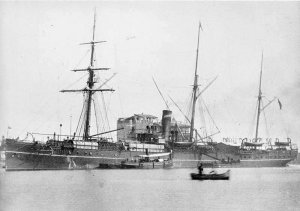

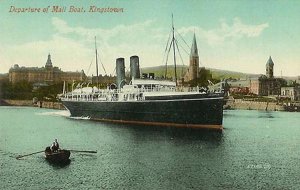
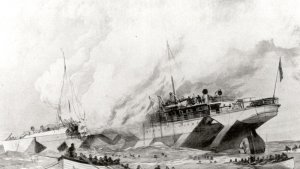

 –
– 

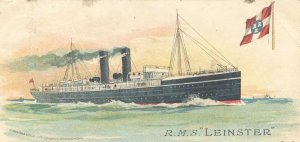
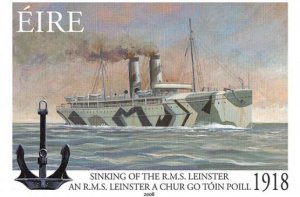
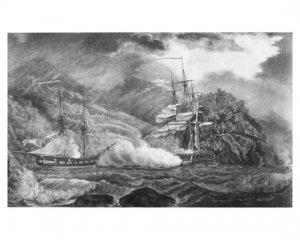

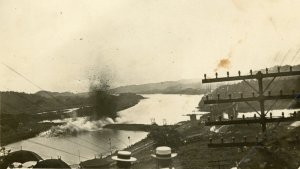
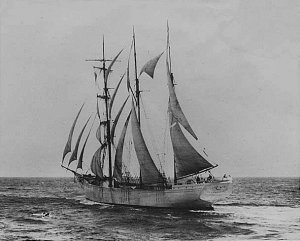
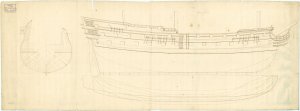
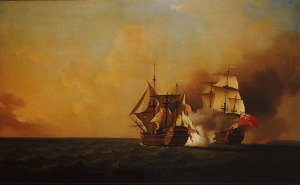



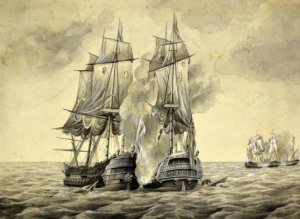
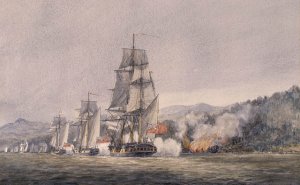

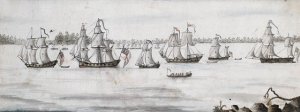
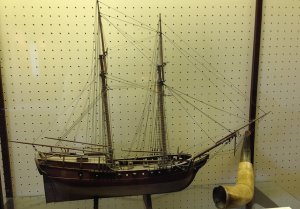
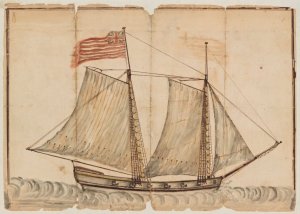
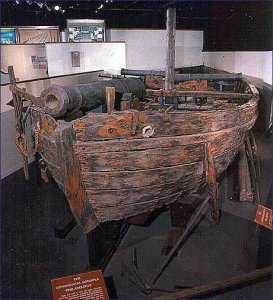

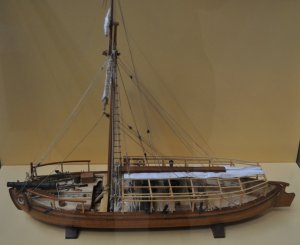
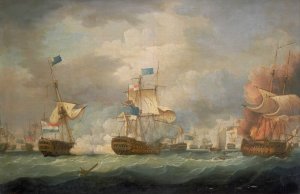
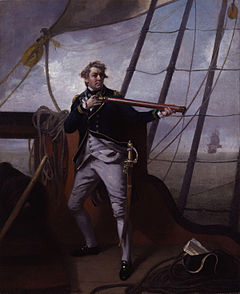
 then arrived that the Dutch fleet under De Winter was preparing to sail, and Duncan's fleet was ordered by Lord Spencer to blockade the Dutch coast. Duncan issued orders for the fleet to weigh anchor, but the men disobeyed and ship after ship overthrew their officers and joined the mutineers at the Nore. Eventually Duncan was left with only his own Venerable and Hotham's Adamant to contain the entire Dutch fleet. Duncan later wrote that, "To be deserted by my own fleet in the face of the enemy is a disgrace which I believe never before happened to a British admiral, nor could I have supposed it possible."
then arrived that the Dutch fleet under De Winter was preparing to sail, and Duncan's fleet was ordered by Lord Spencer to blockade the Dutch coast. Duncan issued orders for the fleet to weigh anchor, but the men disobeyed and ship after ship overthrew their officers and joined the mutineers at the Nore. Eventually Duncan was left with only his own Venerable and Hotham's Adamant to contain the entire Dutch fleet. Duncan later wrote that, "To be deserted by my own fleet in the face of the enemy is a disgrace which I believe never before happened to a British admiral, nor could I have supposed it possible."